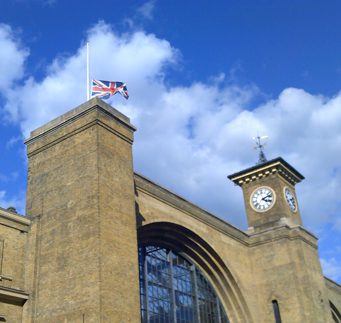In the latest in an occasional series about security-related episodes in the past, Mark Rowe looks at an Irish republican bombing campaign, overshadowed by greater events.
The year 1939 is best known for the beginning of a second world war, and the clash with Germany loomed large until war broke out on Sunday, September 3. In the months before, however, Britain was also convulsed by a widespread – in geography and methods – campaign by the Irish Republican Army. The IRA’s deeds sound highly modern, if the police and state’s responses (minus investigation tools taken for granted now such as video surveillance) do not.
Islamist, right-wing extremist and other terrorism of the 21st century recruits and galvanises its support online. The equivalent in the 1930s was radio. Thus on May 30, 1939, the Manchester Guardian (today’s plain Guardian) reported a ‘pirate’ radio broadcast statement from the ‘GHQ IRA’ that made threats against England, and alleged a ‘veritable reign of terror’ in Ulster. The British press labelled the IRA terrorist, although a more old-fashioned term ‘outrages’ was commonly used to describe bombs.
For example after seven men were convicted at the Old Bailey of conspiracy to cause explosions, six bombs went off on pavements outside buildings around London in the night of March 31-April 1, 1939. The targets show that long before the IRA’s 1990s attacks on the City of London, the IRA went after economic targets. Of the six, premises included the News Chronicle in Fleet Street (a now defunct daily newspaper, in the days when newspapers congregated on Fleet Street in the centre of London), Heals in Tottenham Court Road, a Barratt’s shoe shop in Edgware Road, a dress shop in Park Lane, and Coutts bank in The Strand. One theory was that the bombers drove around in a car or taxi; or, that at least some of the bombers carried the devices in a suitcase.
If it sounds as if the IRA was avoiding killing, that was not so. On July 26, a man was killed in a 1.40pm explosion at a left luggage office (another historically vulnerable place) at King’s Cross station in London, pictured. A similar explosion happened hours later at Victoria station left luggage in London; and in Liverpool, an explosion in a postbox, at the Mount Pleasant sorting office, and a canal bridge. Several cloakroom attendants and passengers at King’s Cross were injured, bringing the total of injured in the IRA’s campaign to 86.
A passing nurse took charge of caring for the injured, and the man who died. She said: “We had no surgical appliances with us, and we had to make the best of the first aid kit which was on the station.” She improvised by using one injured man’s tie as a tourniquet. The Manchester Arena Inquiry volume two report, featured in the December print edition of Professional Security Magazine, identified a ‘care gap’ – that after an act of terror, precisely when casualties are most in need of life-saving treatment, is when the trained 999 responders (the 999 number was only just coming in, around 1939) are yet to arrive on the scene.
In the aftermath of the left luggage bombs, those leaving luggage were asked to produce proof of identity or allow their bags to be searched; searching of left luggage at mainline stations is now commonplace.
The definition of terrorism is to cause fear; and threats (typically sent in the post, whether by the genuine IRA or by well-wishers or the merely malicious) played a part in 1939 as much as actual bombing. Numerous churches and cathedrals had threats sent to them, and had police guards or parts of the threatened place of worship searched for bombs.
On March 29, 1939, Maurice Childs, a hairdresser from Chiswick in west London removed a live bomb from Hammersmith Bridge. Two men were caught and sentenced by May (for such was the speed of justice in those days) at the Old Bailey to ten and 20 years in prison. To quote from the citation of Mr Childs’ OBE: ‘at grave risk’ he threw a suitcase with a burning fuse into the River Thames, ‘where it exploded’. “Two separate charges had been placed on the bridge. With considerable presence of mind and fine disregard of danger, Childs prevented one explosion from taking effect, and this greatly minimised the damage.”
In June, a ‘chlorine gas bomb’ was let off in a Vauxhall Bridge Road cinema; and the press reported cases of ‘postal terrorism’. On Saturday, May 20, the IRA was believed to be behind seven fires in hotels, in Blackpool, Southport, Morecambe, Harrogate, Margate and Southend. Hotels as liminal places where strangers can come and go have always been places that outlaws can seek to use. The suspected methods of starting a fire had been various; such as leaving clothes soaked in paraffin in a wardrobe; bedclothes soaked with something inflammable; incendiary materials in a suitcase left under a bed.
Even on the eve of war, bombings continued; a bomb thrown or left at a Red Cross first aid post in Liverpool; and outside Blackpool town hall. A Friday afternoon, August 25 bomb in Coventry city centre killed five people and injured more. The Second World War, and the heightened security, was enough to cut off the IRA campaign. It had been growing steadily nastier.










